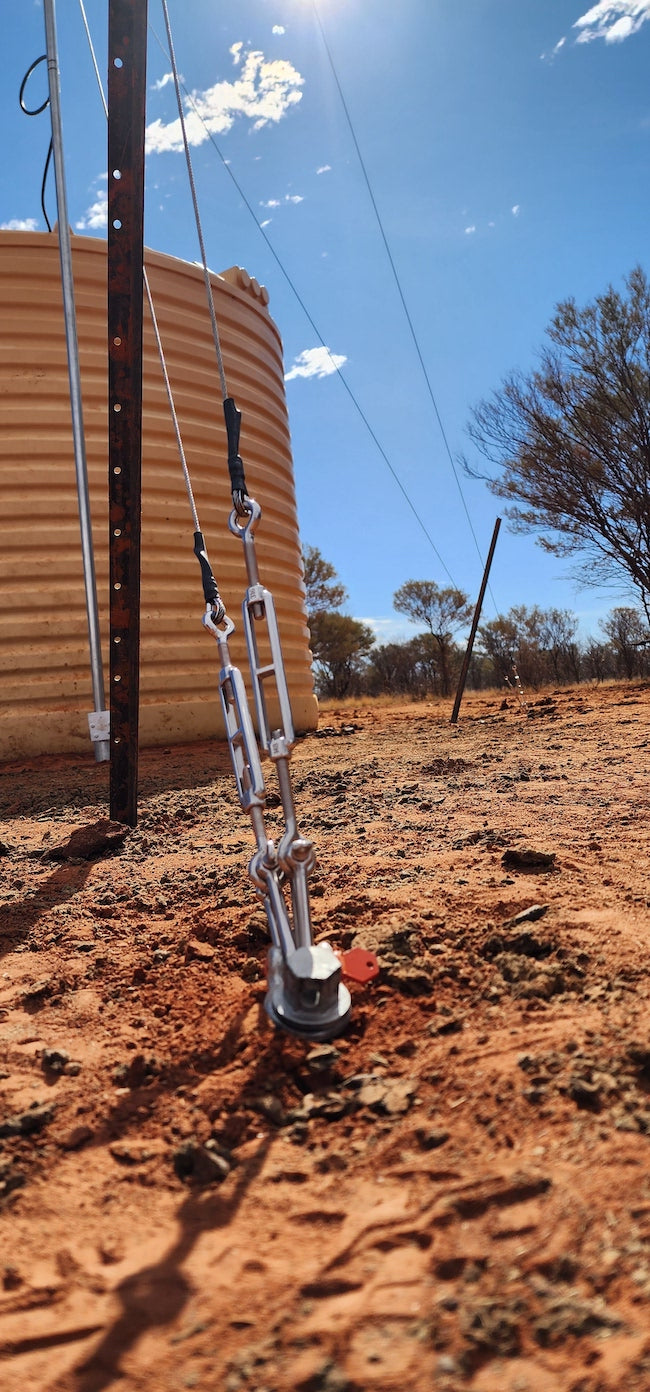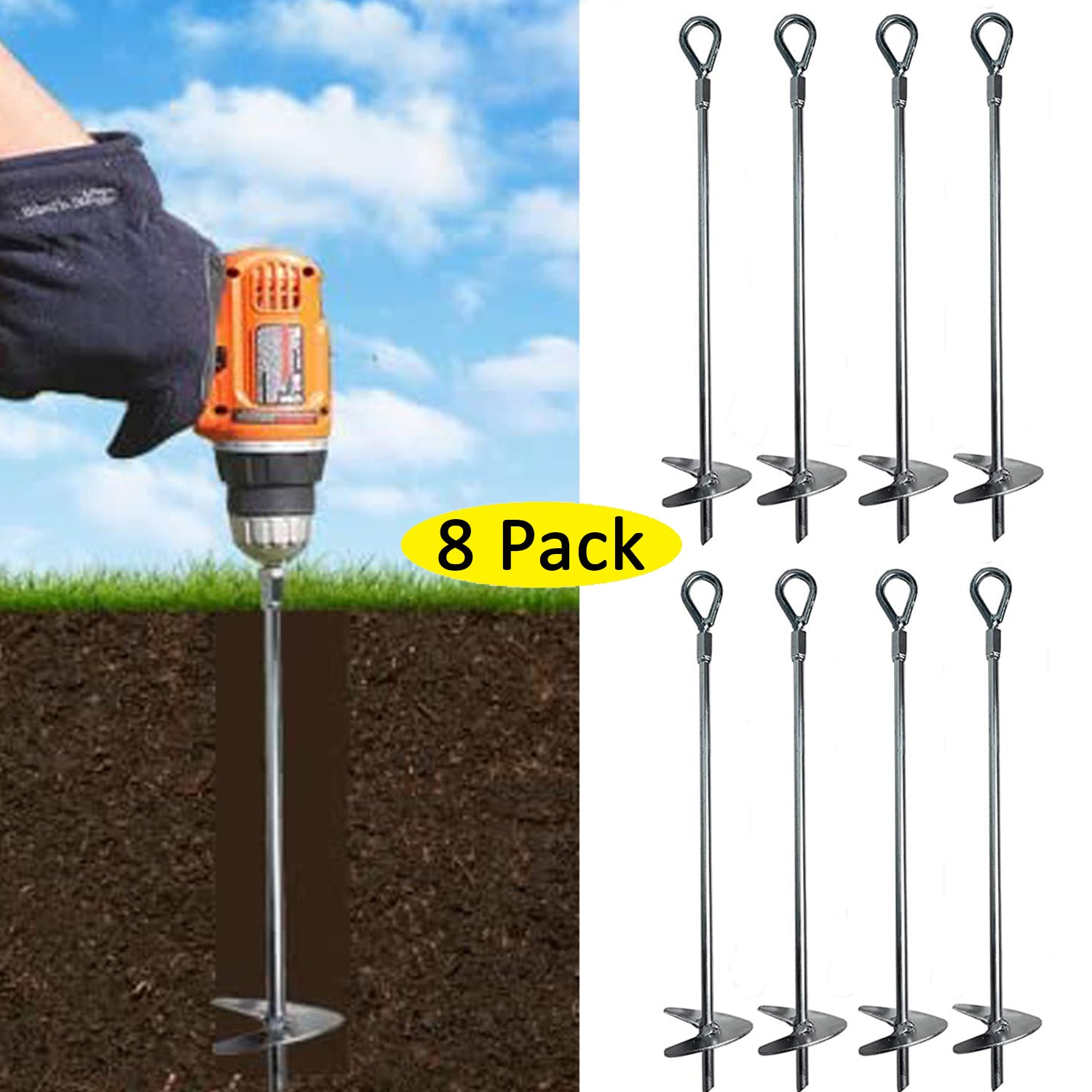Just How Durable Earth Anchors Work: A Comprehensive Overview to Dirt Anchoring Solutions
Durable Earth anchors play a vital duty in supplying security and assistance in numerous construction applications. By installing deeply right into the ground, they stand up to side and vertical forces efficiently. Different types of supports cater to various dirt conditions, making them flexible. Understanding their technicians and installation techniques is crucial for making best use of performance. What factors influence their performance, and how do they contrast to traditional methods? The solutions might stun you.
Understanding Sturdy Earth Anchors
Durable Earth anchors serve as important elements in numerous construction and landscaping jobs, providing stability and assistance in challenging soil problems. These anchors operate by being embedded into the ground, where they resist lateral and upright pressures. Their style permits safe and secure add-on to frameworks, guaranteeing they stay anchored against dirt motion or outside loads.The efficiency of durable Earth supports greatly relies on the kind of soil and the anchor's installment depth. Correct setup methods are critical, as they figure out the support's holding capability. Environmental aspects, such as moisture and freeze-thaw cycles, can likewise impact performance.These anchors are frequently made use of in applications ranging from safeguarding fences and keeping walls to maintaining momentary frameworks during adverse climate condition. Understanding the principles behind sturdy Earth supports is necessary for experts seeking to boost the toughness and security of their jobs.
Sorts Of Heavy-Duty Earth Anchors
Different sorts of heavy-duty Earth anchors are designed to meet specific needs based upon soil problems and project needs. Helical anchors, including screw-like blades, work in softer soils, using high lots abilities and easy installment. Driven supports, which are inculcated the ground, are suitable for rocky surfaces and offer immediate load assistance. Tie-back supports are commonly utilized in maintaining wall applications, permitting for lateral support by securing right into the ground at an angle. An additional type is the cast-in-place anchor, suitable for concrete applications, as they are integrated right into foundations for boosted security. Dirt screw anchors are versatile choices that can be utilized in different dirt types, providing reliable tension and compression capabilities. Each type offers unique applications, making certain stability and security in building and construction and landscape design tasks. Recognizing these alternatives enables for notified choices in picking the proper Earth securing service.
The Mechanics of Soil Anchoring

Comprehending the technicians of soil anchoring calls for an examination of numerous kinds of Earth supports and their setup methods. Each anchor type provides distinct qualities that influence its performance in different dirt conditions. Proper installment approaches are important for optimizing the securing system's stability and efficiency.
Sorts Of Earth Anchors
Earth anchors, crucial elements in dirt anchoring systems, come in a number of kinds, each made for particular applications and soil conditions. The most typical kinds include screw anchors, which are twisted right into the ground, providing solid side resistance. Helical anchors include blades that permit efficient installment in different dirt types, making them suitable for both short-lived and irreversible applications. Driven supports, usually made from steel, are hammered into the soil and are effective in dense or rough atmospheres. Auger supports use a helical design to assist in installation in softer dirts. Plate anchors are composed of a level plate buried flat, dispersing lots over a bigger area, suitable for applications requiring high tons capacities in cohesive soils.
Installment Methods Described
Correct setup techniques are crucial for the effectiveness of soil anchoring systems. The procedure usually begins with website evaluation, validating the selected place can support the support's load. After determining the correct support kind, appropriate hole depth and angle should be developed. The installation includes driving the support right into the ground making use of specialized equipment, such as hydraulic or hands-on motorists, to accomplish finest embedment. Post-installation, tensioning the support is critical to assure stability; this is usually validated with lots screening. Furthermore, bordering dirt conditions should be kept track of to avoid displacement. Complying with these strategies not just boosts the anchor's performance but likewise prolongs its lifespan, offering reliable assistance for various applications.
Applications of Heavy-Duty Earth Anchors
While sturdy Earth anchors are commonly connected with building and landscaping, their versatility reaches a selection of applications throughout various markets. In civil engineering, they offer essential assistance for retaining walls, making sure security in areas vulnerable to soil disintegration. The aquatic field makes use of these anchors for securing docks and marinas, preventing movement brought on by tides and currents. Furthermore, in the telecom industry, sturdy Earth supports are considerable for maintaining cell towers and various other tall frameworks versus wind forces. Agricultural applications likewise benefit, as these supports can safeguard frameworks like greenhouses and animals fencing, ensuring they withstand rough climate condition. In renewable power jobs, such as wind farms, Earth anchors play an essential function in protecting wind turbine foundations, improving general security and efficiency. This wide series of applications highlights the flexibility and integrity of durable Earth anchors across numerous areas.
Advantages Over Standard Anchoring Approaches
Although typical anchoring methods have long been relied upon for stability, heavy-duty Earth anchors supply significant benefits that improve efficiency and effectiveness. One significant advantage is their superior load-bearing ability, which enables them to stand up to better pressures without failure. This stamina makes them ideal for demanding applications, such as in building and energy installations.Additionally, sturdy Earth supports are made for deeper installment, providing better security in various soil conditions, including loosened or sandy dirts. Their resistance to rust and environmental variables assures a longer lifespan and lowered maintenance expenses compared to conventional methods.Moreover, these anchors can be installed with minimal disruption to the surrounding location, preserving the honesty of the landscape. Generally, heavy-duty Earth anchors provide a reliable and effective option for securing needs, exceeding the limitations often connected with typical anchoring strategies.
Installment Process and Best Practices
The setup process for dirt anchoring options starts with extensive prep work and website evaluation to assure peak efficiency. Following this, a detailed installment guide supplies clear instructions for effective execution (tensile load anchors). Abiding by these best methods is essential for achieving durable and reputable anchoring outcomes
Preparation and Website Evaluation
Efficient prep work and detailed site assessment are vital steps in the installment of dirt securing solutions. Prior to setup, the dirt kind must be analyzed to establish its bearing ability and viability for securing. Conducting a geotechnical study can offer important details concerning soil composition, wetness levels, and potential ground motion. Furthermore, determining existing structures, plants, and energies is vital to prevent disturbance throughout installation. The visit area should be cleared of particles and obstacles to assure safe accessibility for equipment. Climate condition must also be kept an eye on, as unfavorable conditions can affect both security and setup efficacy. By meticulously preparing the site and examining all relevant aspects, the chance of successful anchor efficiency is substantially increased.
Step-by-Step Installation Guide
A thorough setup process is important for accomplishing optimal performance of dirt anchoring services. The installment begins with choosing the suitable anchor kind and assuring the website is clear of debris. Next off, proper opening placement is established based upon tons demands. Once the location is developed, holes are pierced to the specified deepness and diameter utilizing the correct devices. The support is after that placed right into the opening, making certain it is aligned correctly. After securing the anchor, soil is backfilled and compacted to improve security. It is vital to follow supplier guidelines throughout the process. A post-installation evaluation verifies that the supports are effectively positioned and working as meant, providing trusted support for the desired application.

Upkeep and Inspection of Earth Anchors
Routine upkeep and evaluation of Earth supports are crucial for guaranteeing long-lasting efficiency and stability. Routine checks permit the early discovery of problems such as deterioration, loosening, or dirt movement. Inspectors should seek indications of corrosion or degradation on the support components, especially at the connection points. Furthermore, the bordering soil should be examined for disintegration or changes in blog here wetness material, which can impact anchor effectiveness.It is suggested to establish a routine inspection schedule, preferably a minimum of when a year, depending on ecological conditions. Throughout evaluations, all noticeable parts should be cleaned up to eliminate dust or debris that can conceal potential issues. Any type of indications of distress, such as turning frameworks or uncommon settling, need to prompt immediate examination. Proper documents of evaluations can help in monitoring anchor efficiency gradually and promote prompt upkeep activities, guaranteeing the anchors remain trusted and functional.
Regularly Asked Inquiries
What Materials Are Heavy-Duty Earth Anchors Normally Made From?
Heavy-duty Earth supports are commonly created from long lasting products such as galvanized steel or stainless steel, making sure toughness and resistance to deterioration. These products give resilient assistance and security in various soil problems and applications.
How Do Soil Problems Impact Anchor Performance?
Dirt problems considerably affect support efficiency. Aspects such as dirt kind, moisture content, and compaction influence the support's grip and security, with cohesive soils usually giving better resistance than loosened find out here or sandy soils, impacting total effectiveness.
Can Heavy-Duty Earth Anchors Be Reused After Elimination?
Sturdy Earth anchors can be recycled after elimination, offered they are evaluated for damages and wear. Proper cleaning and maintenance boost their durability, ensuring efficient efficiency in subsequent installations when problems enable risk-free reinstallation.
What Are the Ecological Impacts of Utilizing Earth Anchors?
The ecological influences of making use of Earth supports consist of prospective dirt disturbance, disruption of regional environments, and possible contamination of groundwater. If utilized responsibly, their benefits usually outweigh these problems, advertising security in different applications.
Just how Do I Select the Right Support for My Task?

Comments on “Design Principles for tensile load anchors for High-Stress Environments”